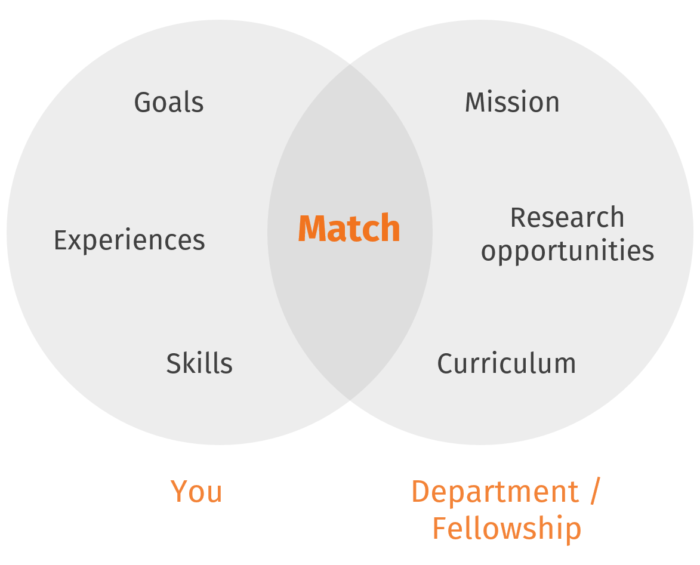Senior undergraduates and early-career graduate students who apply to a graduate or fellowship program may find that these applications have unique requirements. Some applications may even have different names for similar documents: Statement of Objectives, Intellectual Excitement, Statement of Purpose, etc. However, most academic applications share some basic components, which we address in the following articles.
- Overall strategy: Establish a match
- Personal Statement or Statement of Purpose (Graduate School)
- Personal Statement (Fellowships)
- Research Proposal
For every application, our strategic goal is to convince the reviewers that you are a qualified match for their program. Keep that in mind as you work on each piece of the application.
Overall strategy: Establish a match
In the words of a Berkeley professor regarding graduate school applications:
It must come out very clearly what the student wants to learn, study, perform research on, and why they want to do it. Why is the student applying to work with me?
A similar mindset applies for fellowship applications. As a whole, every application has the same goal: to show that you have the skills, knowledge, and background necessary to succeed in a specific environment. We call this concept “qualified match.” To best demonstrate match, we recommend completing the following exercises before beginning your application.
Know yourself
Reflect on your experience, motivation, and research goals. Start by listing all relevant experiences. Be specific, concrete, and quantitative. Does each experience help to convince the committee that you are qualified? In addition to technical knowledge, include experiences that demonstrate your leadership, organization, and communication skills. What drives your research motivations, and how do your motivations link to your background and long-term goals? Think beyond, “I want to get a Ph.D.” and articulate why a Ph.D. will help your ulterior objectives.
Know the program
Each department and fellowship has different goals and missions; some might value fundamental science, others engineering innovation, and others societal impact. To demonstrate how well you fit with the program, you must know what they value. Explore their webpages (beware outdated information!), look at the profiles of successful applicants, and talk to current fellows or faculty/postdocs with experience.
Demonstrate match

Now that you have identified your place in the program, it is important to illustrate this mutual compatibility in your application.
Throughout the application, explicitly state how your knowledge and experiences overlap with the program’s goals to illustrate that you and the program are a good match. By using this concept, you can show the committee that your experiences, goals, and ideas will advance the goals of the organization or school to which you are applying.
